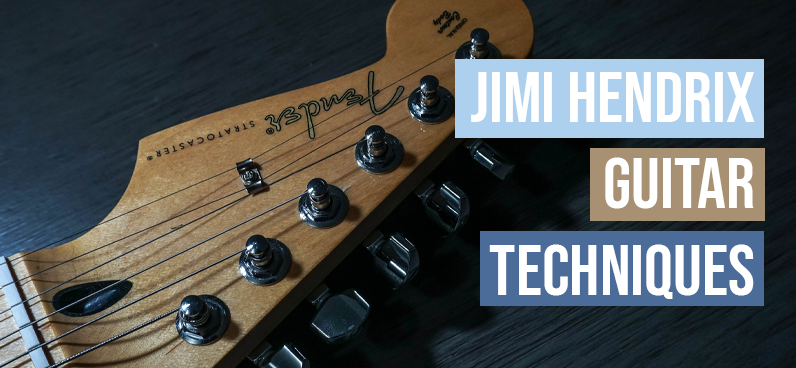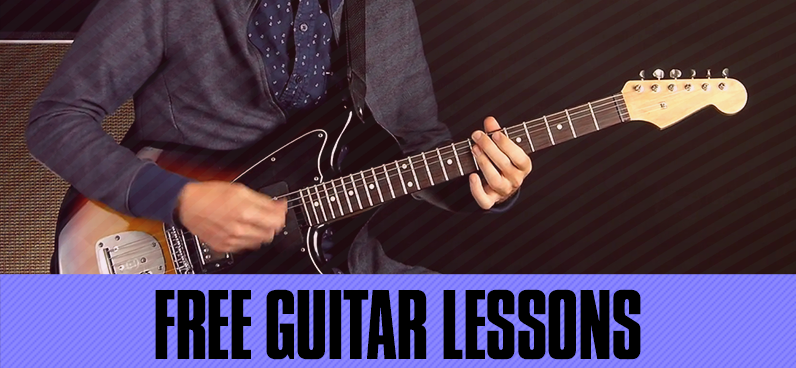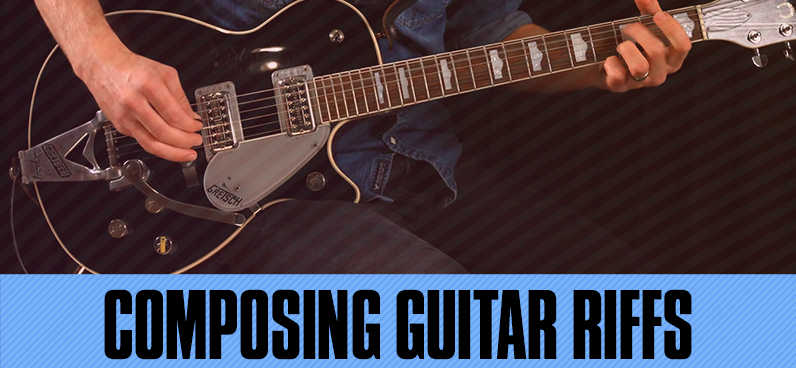
The playing style of guitar legend Jimi Hendrix has been analyzed quite a bit over the years, and as a result, there's a huge list of things you can do to replicate his distinctive guitar playing. However, you should always start with the following 5 core concepts that are absolutely fundamental to his playing. In fact, most other aspects of Hendrix's playing style you encounter will usually in some way either build upon one of the below five ideas -- or simply not be possible without it.
Here are 5 elements at the very heart of his playing style. If you want to get the Hendrix sound, this is the place to begin.
1. Down-tuned Guitar
Famously, Hendrix nearly always tuned every string on his guitar down by one semitone. This is also sometimes called a "down-tuned" guitar, being down-tuned to Eb (E flat), or playing in Eb. What it means in practice is that instead of the strings being in standard tuning (EADGBe) they are Eb, Ab, Db, Gb, Bb, and Eb.
You may have noticed this if you've ever tried to play along with one of his songs and wondered why you sound out of tune. Of course, some songs are in standard tuning, various YouTubers have altered recordings and backing tracks into standard tuning -or you could just play one fret lower on your guitar. However, being in Eb, the strings are a little slinkier and the resulting sound is more free and lucid, with a lower deeper rolling quality. Also, so much guitar music is in the key of E, so being in Eb does differentiate it slightly. It isn’t an absolute essential but if you try it you will notice the difference (and not want to go back)!
2. Rhythm Guitar Style
Jimi Hendrix is famous for his rhythm guitar playing style, fusing elements of rhythm and lead guitar techniques into one articulation. Again, a huge amount could be said about this, but let's look at the core essentials:
Hendrix wraps his thumb around the neck and uses it to play the bass notes of chord shapes, allowing him to play what are effectively bar chords. The thumb-around-the-neck position frees up one or two fingers to add embellishment, slides, legato and fills. This effectively creates a fluid, embellished, padded, expressive rhythm guitar style for which he became very famous and many guitarists have emulated since.
3. Fuzz, Octave, & Wah
If you're looking to recreate Hendrix's tone, you'd better add these three effects to your chain. He used the octave effect in isolation to add depth and thickness to melodic lines in a rhythm part, wah for expression in soloing, fuzz for a distinctive lead sound -- and even all three pedals in conjunction to create an extremely powerful, unbridled tone.
4. Minor Pentatonic and Natural Minor Soloing
These two scales are by far Hendrix’s most used in all his lead guitar parts. Generally speaking, he wasn't known for using exotic scales, modes or complex harmonies.
His style is more about expression, note choice and delivery. At times he created melodic lines that were simple, but harmonized perfectly with underlying basslines and chords. Other times, he created faster more dynamic, less melodic runs, links and phrases.
5. Playing with Freedom
Playing expressively, with freedom, loosely, creatively and with a carefree manner are all key factors here. But, it's a fine line between that and rough, messy or sloppy guitar playing. Jimi Hendrix gave the appearance of playing roughly and loosely -- and even a bit lazily at times -- but his ultra-strong underlying technical ability always shined through.
S,o there are two main lessons here. Firstly, there is no substitute for -- or shortcut to -- excellent technique. And secondly, once you have this foundation you can create a unique style, approach or vibe that makes you a more memorable guitarist, with the technique to back you up.

